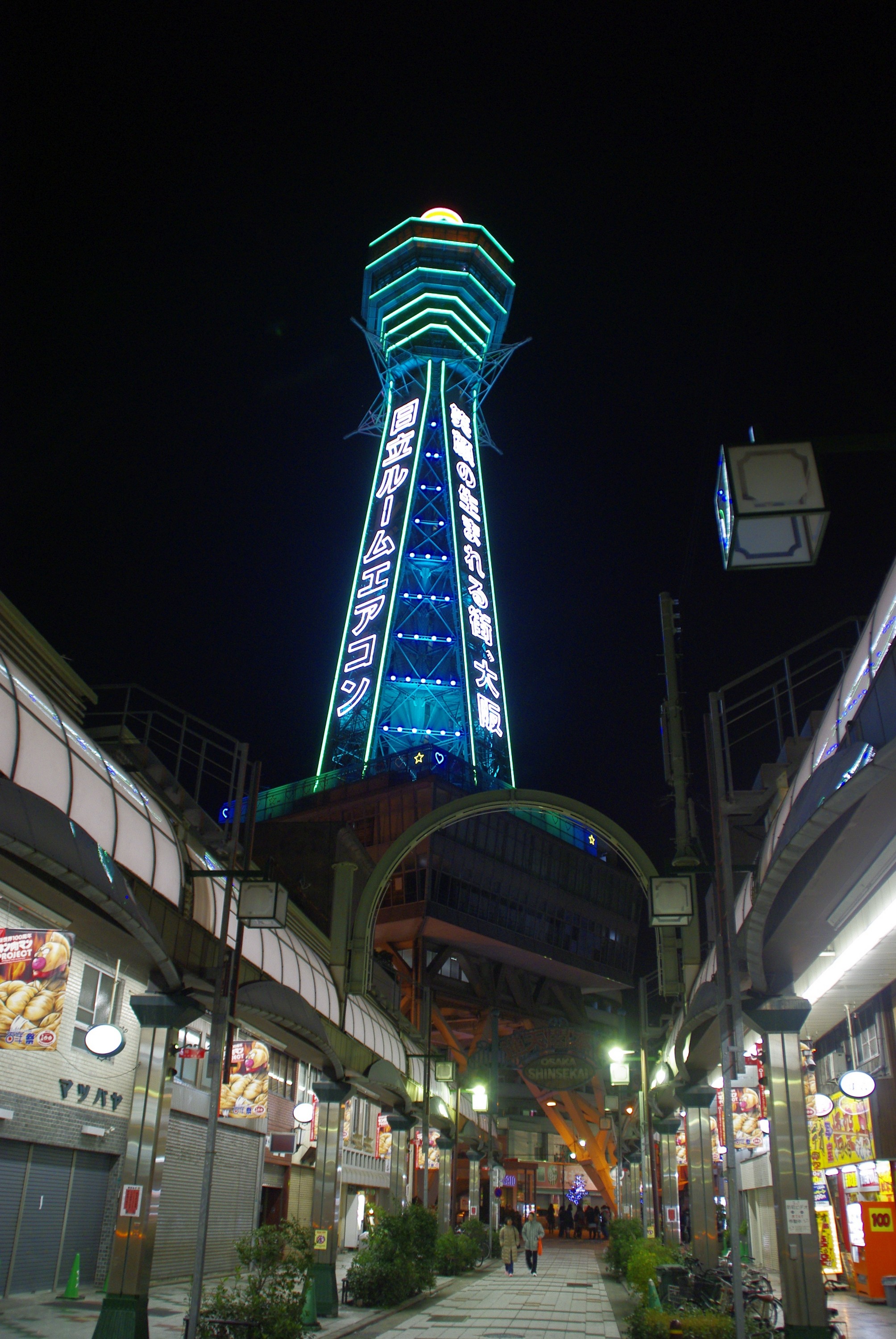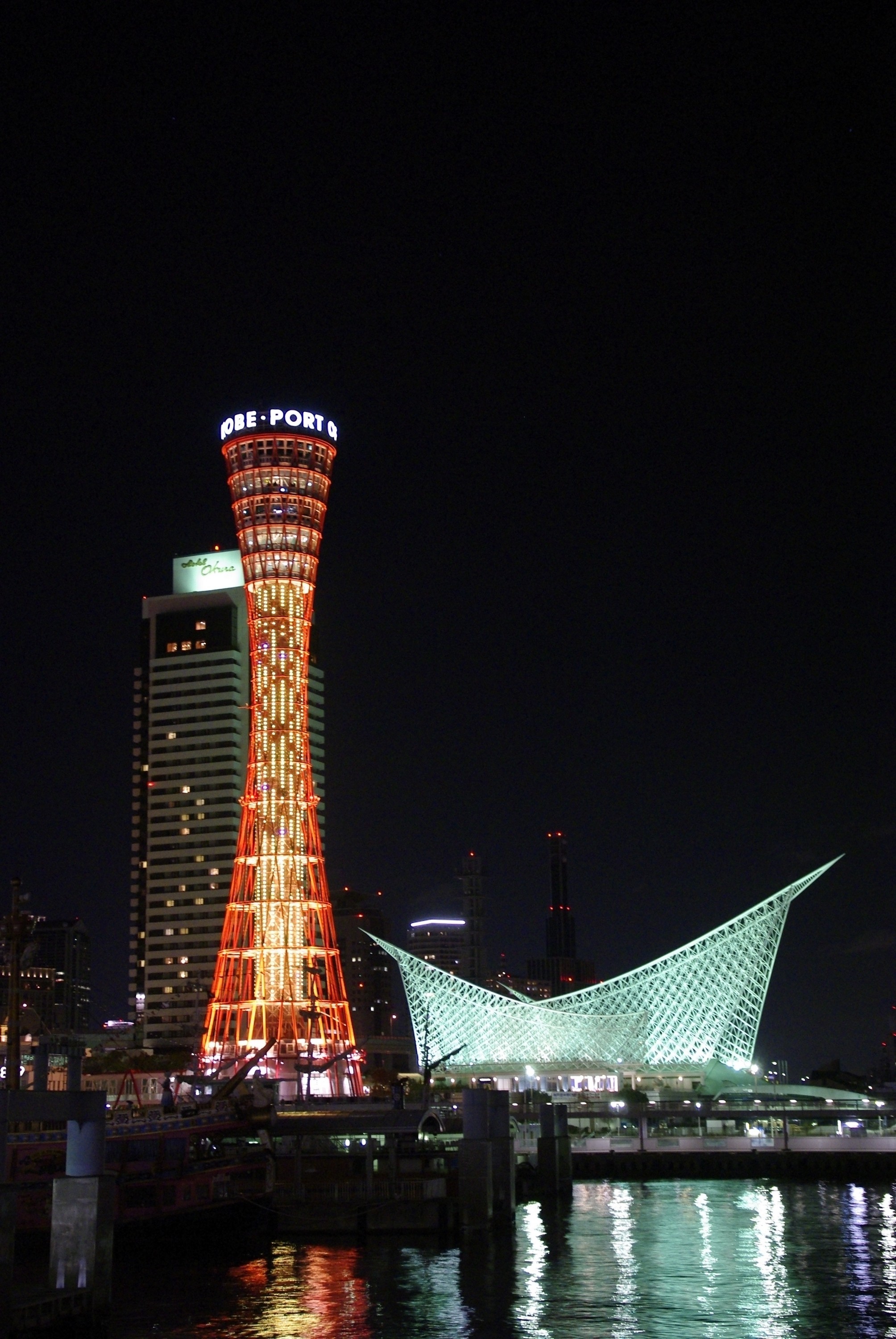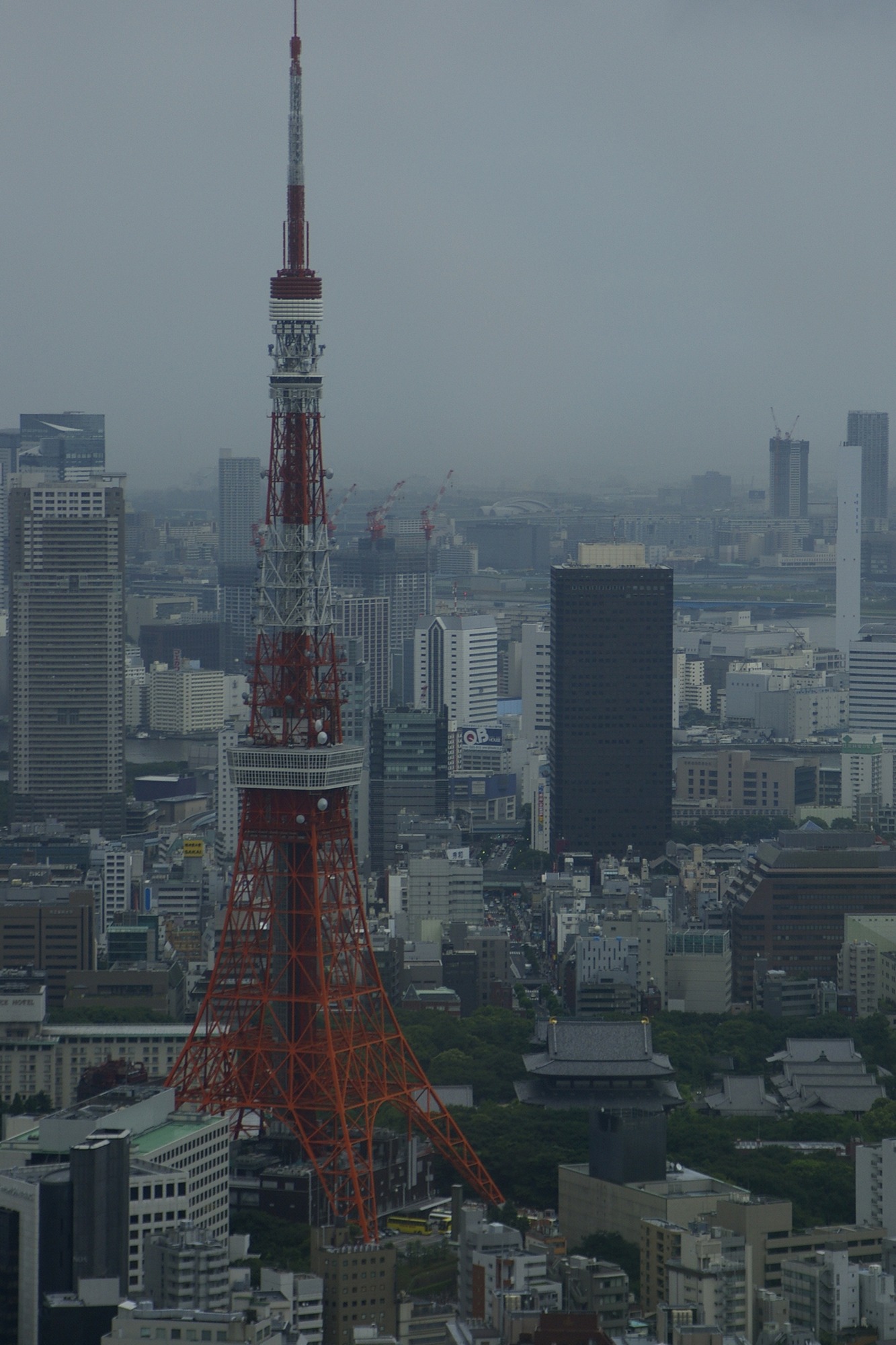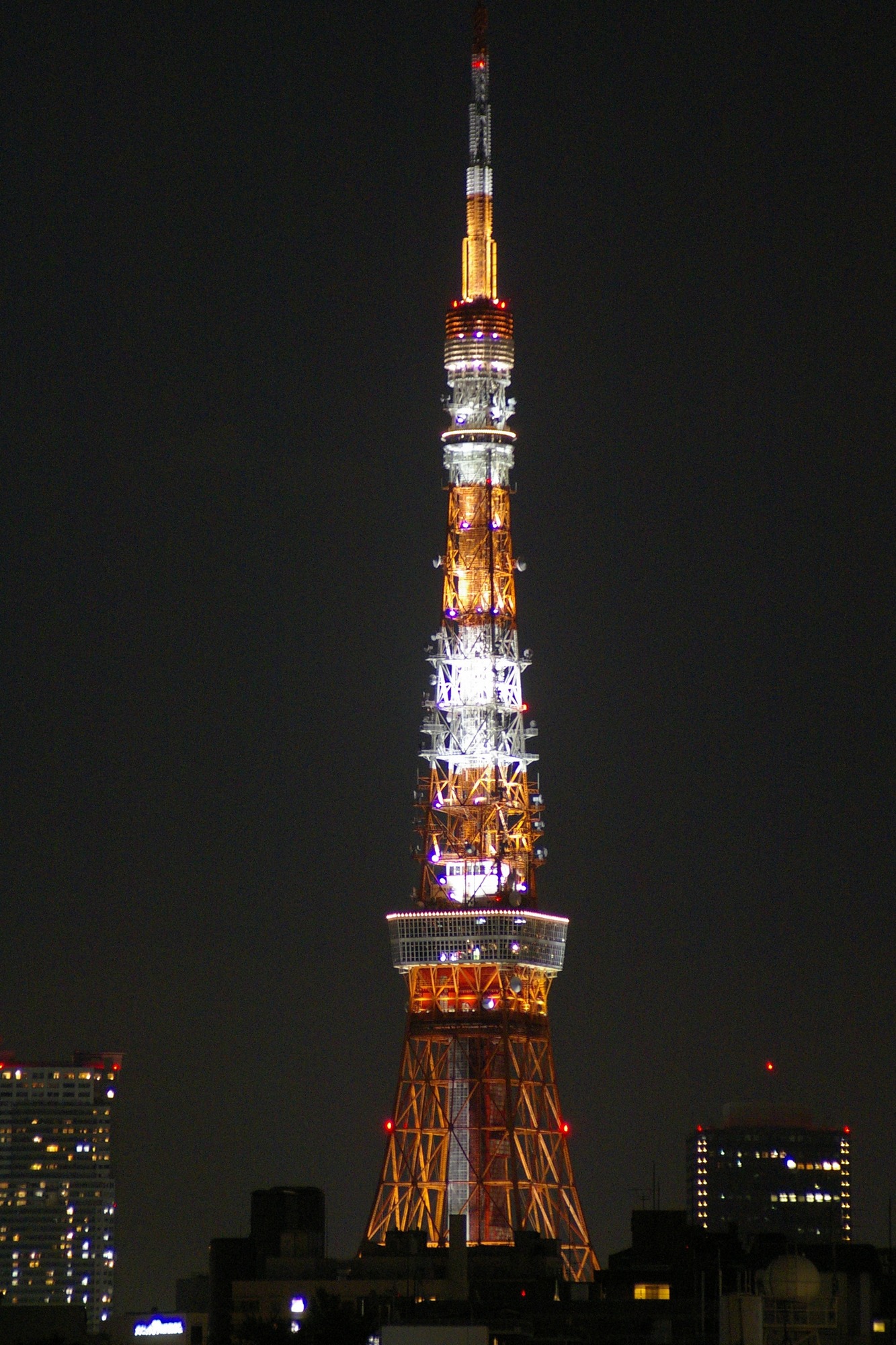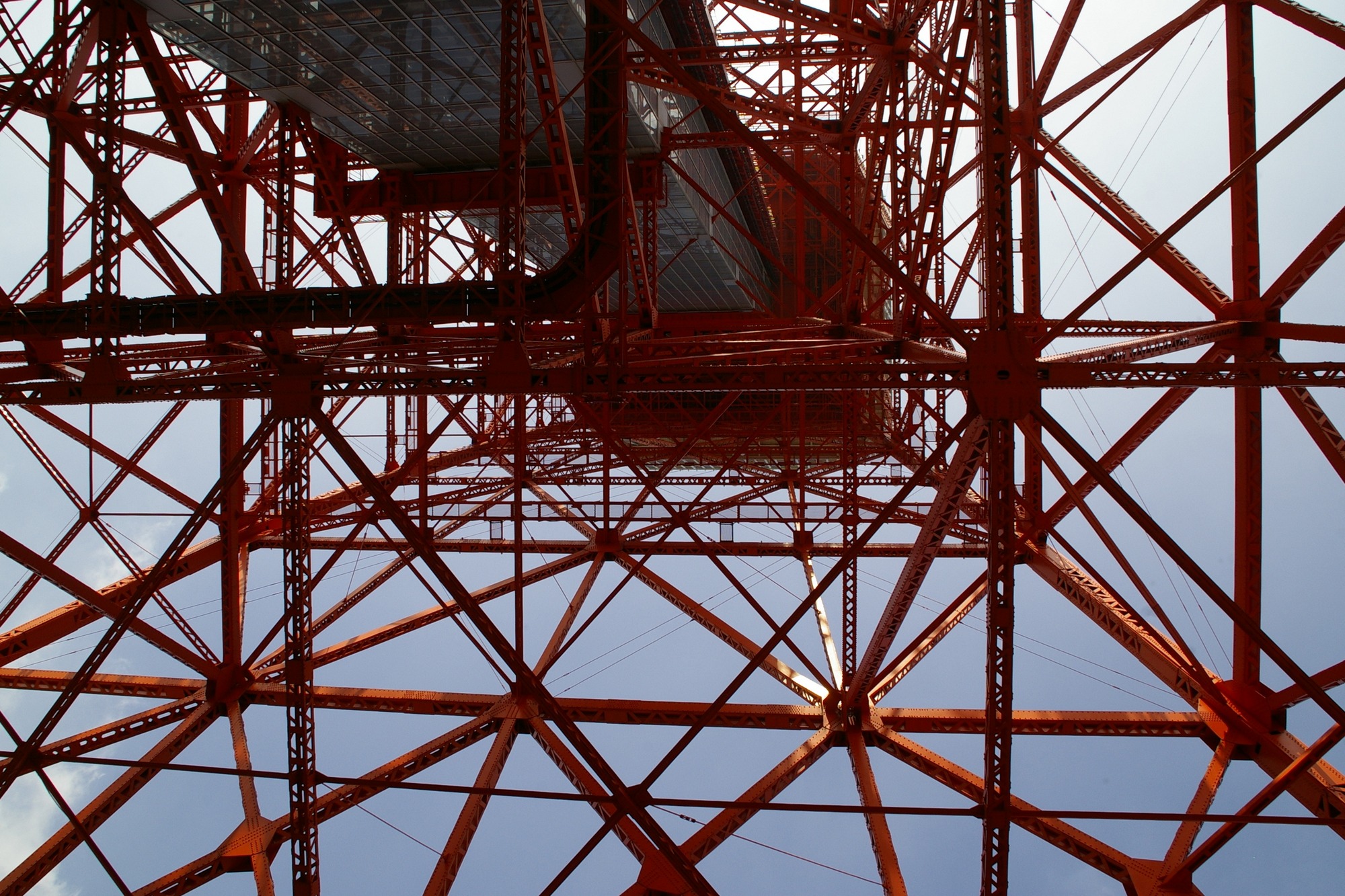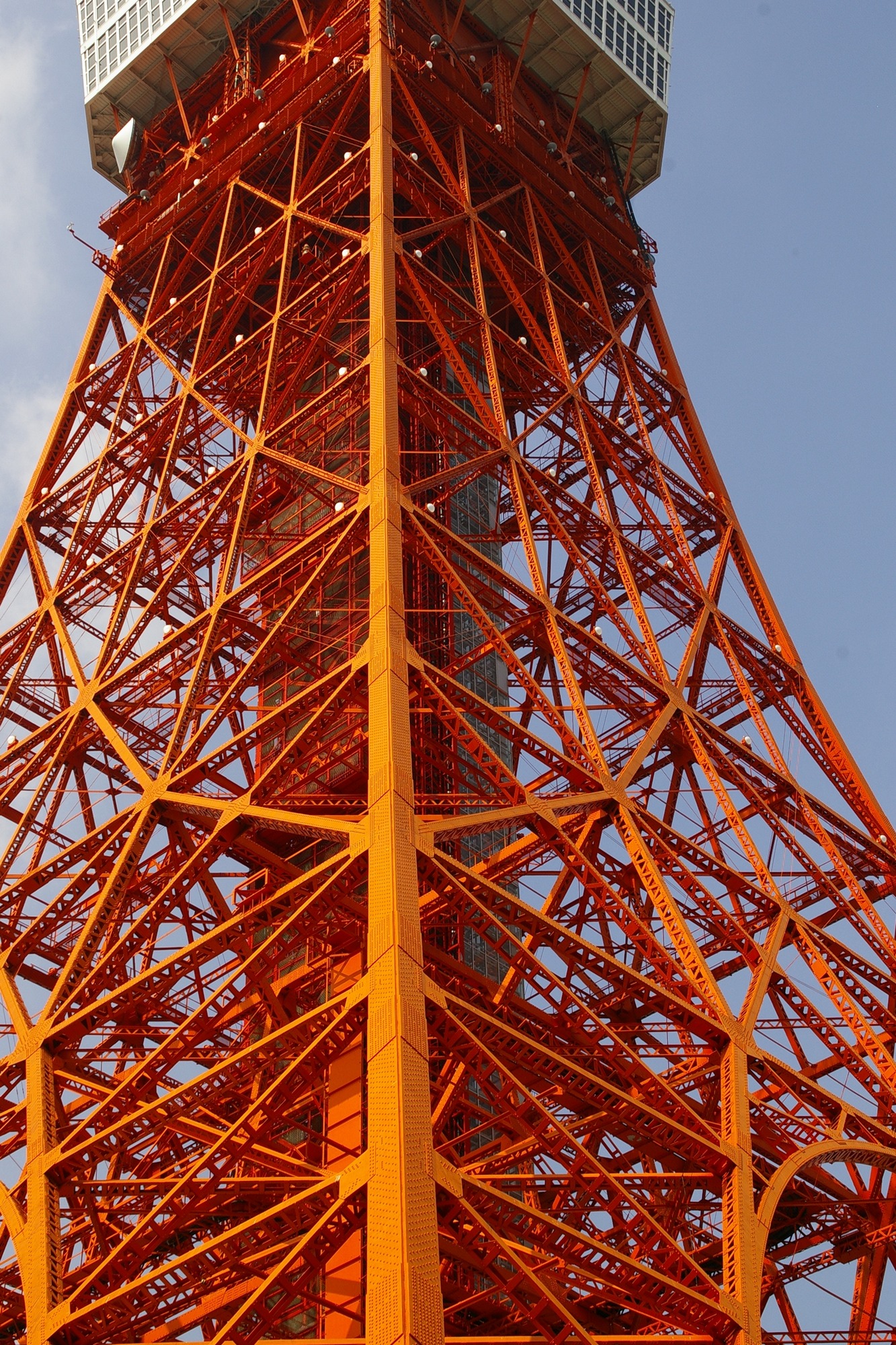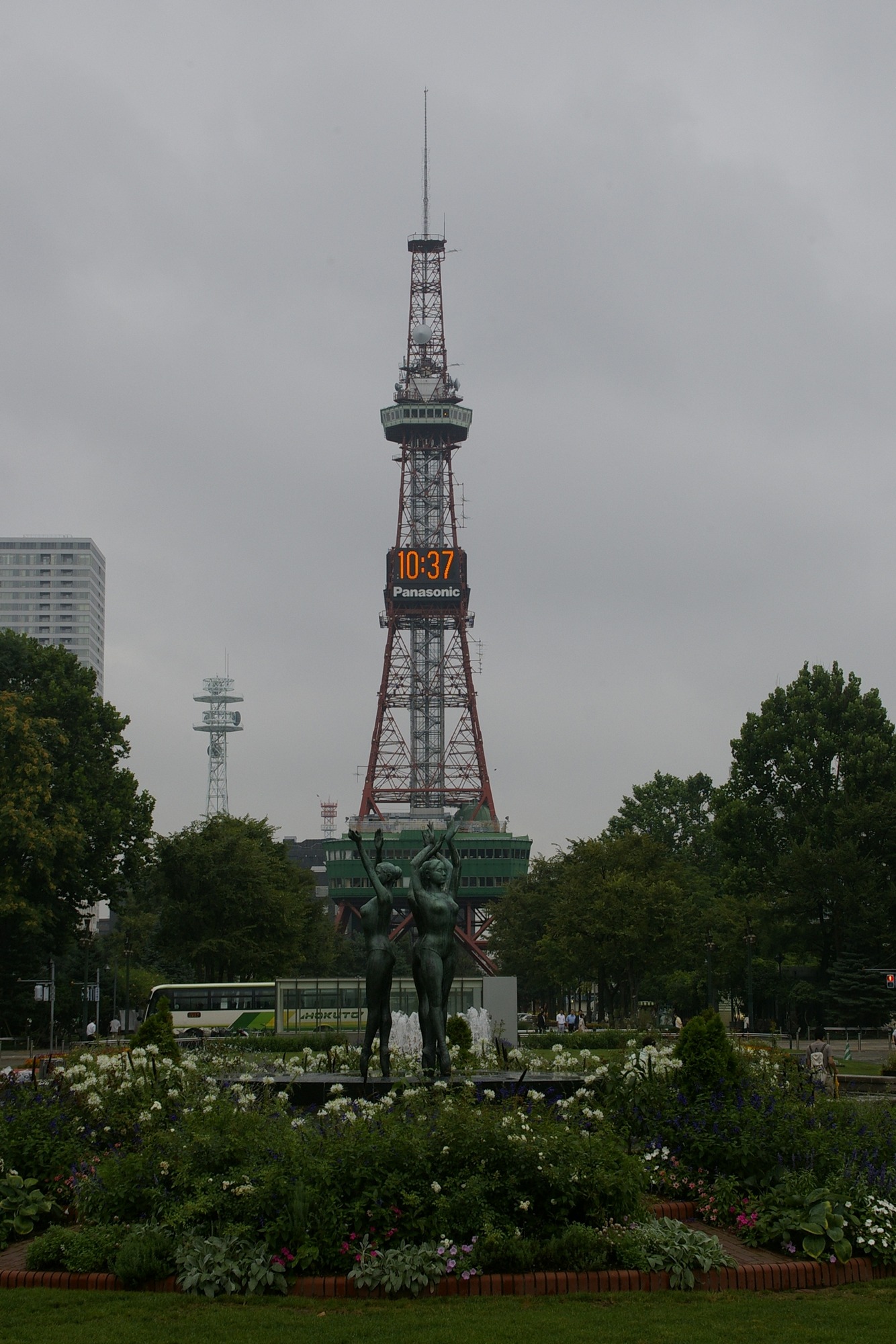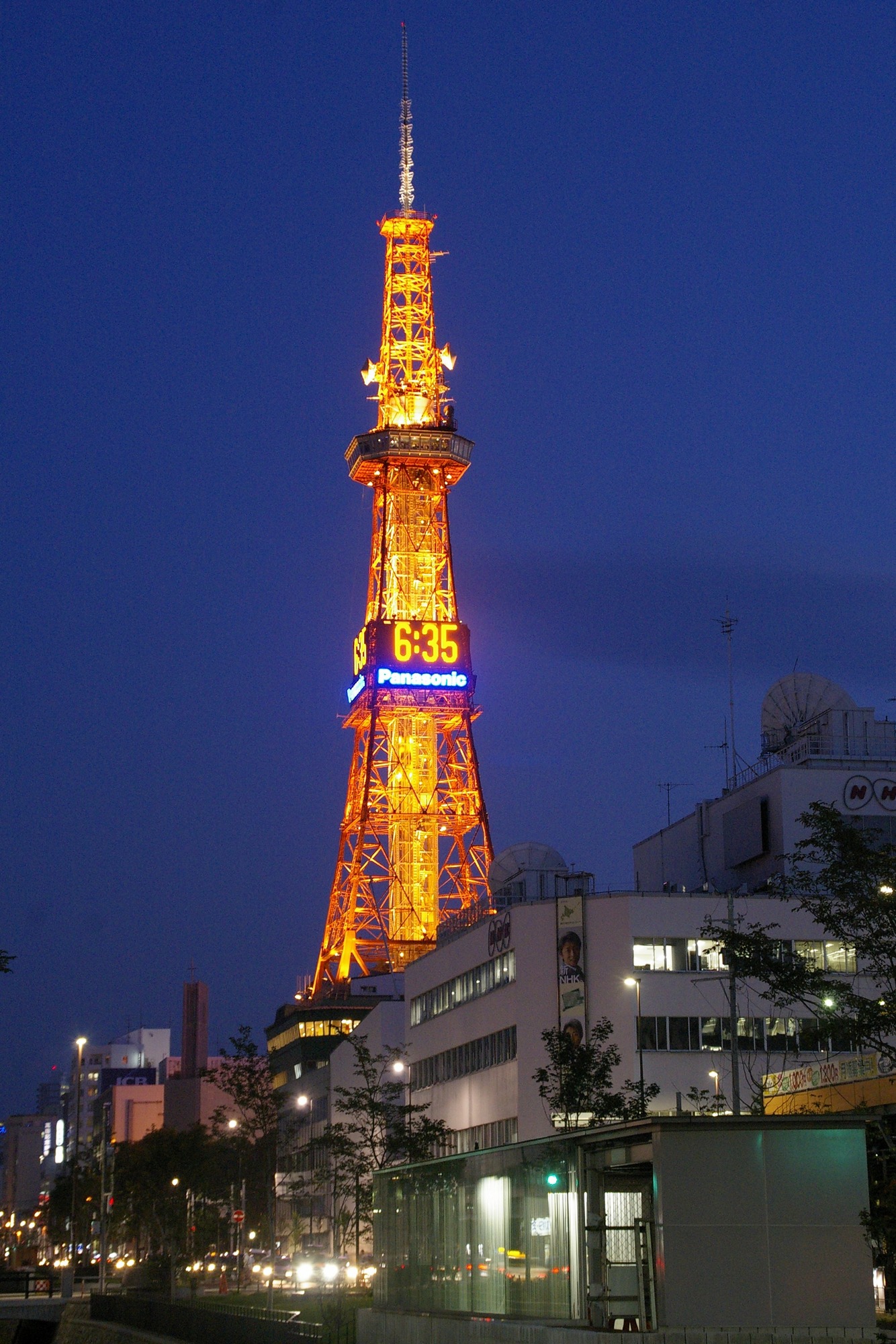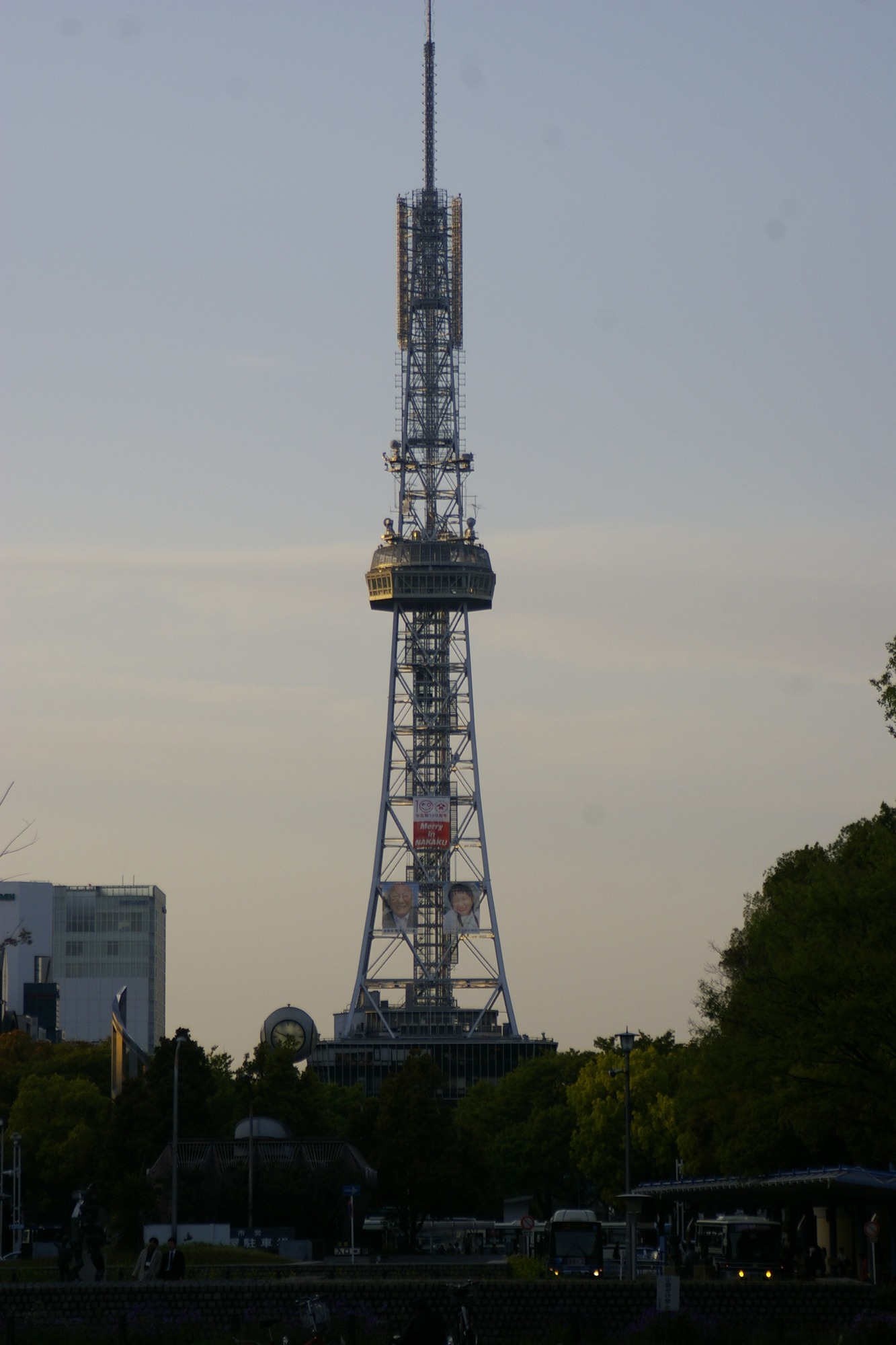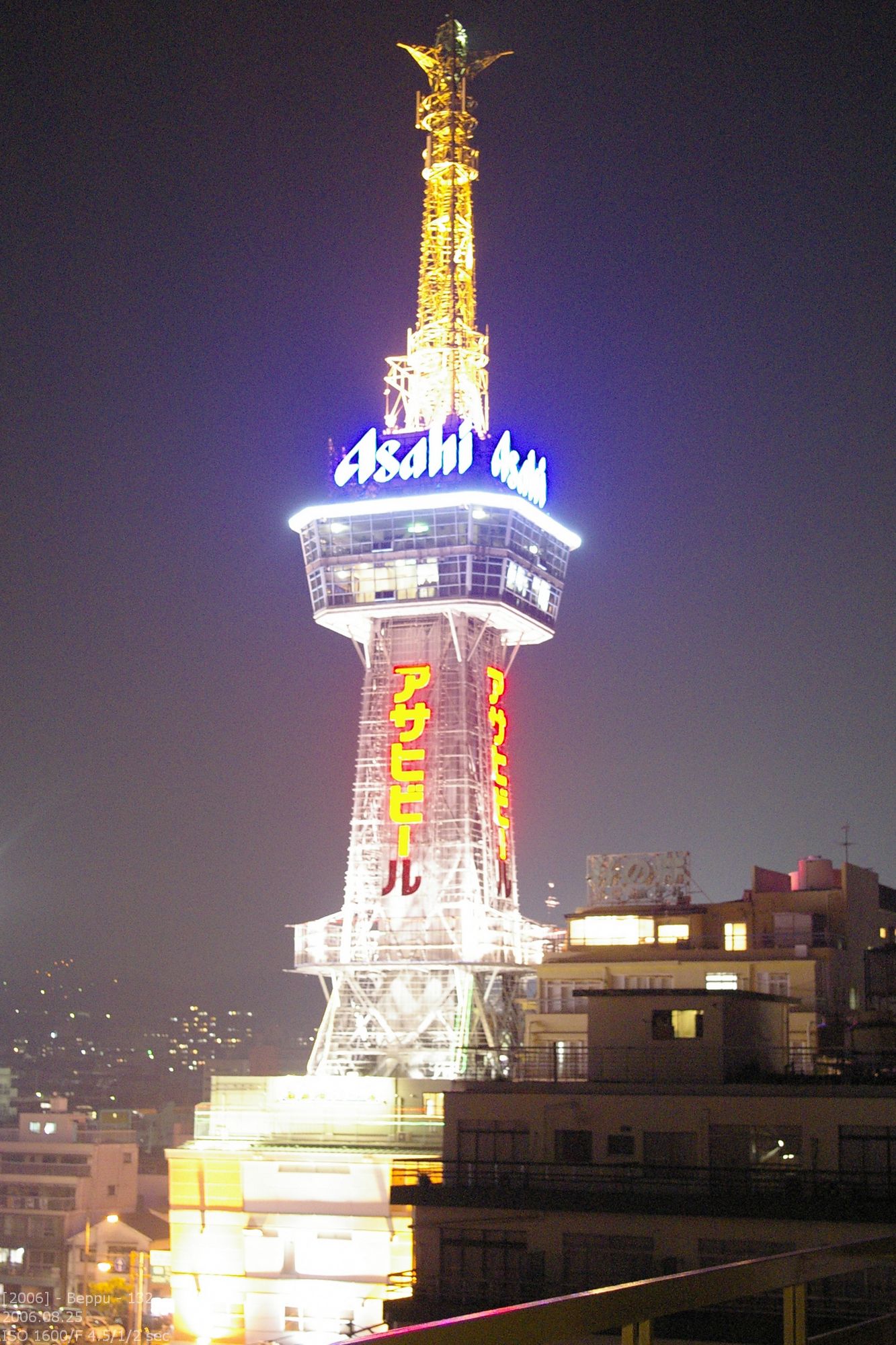Not every radio tower looks like the Eiffel Tower. But one rule is sure: Every major city has a radio tower.
Kobe-Port-Tower (神戸ポートタワ)
height 108m, viewing platform at 90.3m; opened in 1963
Kobe Port Tower is not a radio tower, but shall be mentioned here too. He opened in 1963 and is located in the Merikan-Park, an old harbour area of Kobe. The steel construction has a hyperbolic shape and resembles the Canton Tower in China a little bit. The tower is 108m high and has an obervation deck at 90,3m. The red steel is illuminated at nights and gives a nice constrast to the also illuminated roof of the aquarium next to it.
Tsutenkaku Tower (通天閣)
height 103m, observation deck at 84/87m; architect: Tachū Naitō; opened in 1956
The tower is for sure and forever the landmark of Oosaka, no, of the whole Kansai area. No mange/anime playing in Oosaka without a reference to the Tsūtenkaku Tower. That by the way can be translated as „Heaven reaching tower“. He is located in Naniwa district close to the station Shin-Imamiya.
The current tower, opened in 1956, is the second tower of Oosaka. The first tower was opened in 1912 but burned down in 1943 and was demolished. This first tower really resembled the Eifffel Tower in Paris but was much smaller, and still the second highest building in Japan. You can say that this first tower is original and all other existing tower are only a copy. The second tower has a diffrent design. It has a eight edged ground shape and neon advertisement for Hitachi mounted to it. There are also two lights at the top that serve as a weather forecast. But the Tsutenkaku Tower has also something in common: the architect Tachū Naitō.
On the fifth floor Billiken is enshrined. This is a Goddess of Happiness or „things as they ought to be“ from Amerika(!). It is an import. I still don’t get this thing. But, Billiken seems to be a big number around the tower. Billiken is connected to Tsutenkaku Tower since the opening of the Luna Park in 1910. He got lost in 1923 when the park closed down. A copy was built in 1979 by old pictures.
[Small note on a personal matter: Tsutenkaku Tower is the only tower I ever visited the observation deck. This was on my first journey in 2004 … Added in 2012: I have to add the Sky Tree to this list. But this is a different story and I wouldn’t put the Sky Tree on to the list of the classical radio towers.]

